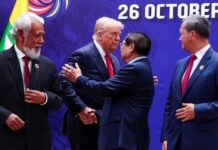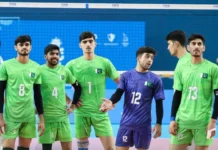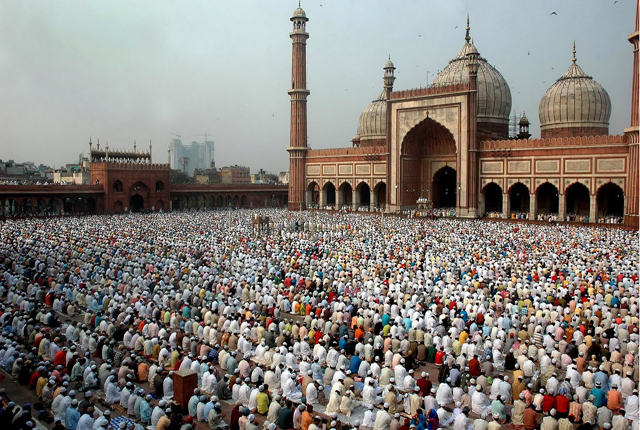Indian courts are submerged in a deluge of mundane cases. Ordinarily, they should avoid dabbling in religious matters to find time to dispose of the plethora of pending non-religious cases. But, they dabble in religious matters though India’s constitution guarantees freedom of religion. Their religious verdicts reflect that they have succumbed to Hindutva influence. They consider a Hindu temple essential to Hindu worship but not a masjid essential to Muslim worship.
Follow what looks certain
Islam is not a monolithic iron-clad jacket. Besides the literalist and the Shia, there are Hanbali, Maliki, Shafiee, and Hanafi schools of thought.
All religious schools derive their edicts from the Holy Quran and ahadeeth. Imam Abu haneef (ahlur- rai, school of opinions) advised that if any of his opinions were incompatible with the Quran and hadeeth, throw it away.
One can follow any school in the light of the following hadith:
“Leave that which makes you doubt for that which does not make you doubt”. This hadeeth was narrated by at-Tirmidhi (2442), Ahmad (1630) and Ibn Hibbaan (722) from al-Hasan ibn ‘Ali (may Allah be pleased with him) who said: I memorized from the Messenger of Allah (blessings and peace of Allah be upon him): “Leave that which makes you doubt for that which does not make you doubt, for truth leads to reassurance and lies lead to uncertainty.” Classed as saheeh by Shaykh al-Albaani (may Allah have mercy on him).
The Indian courts may interpret the Constitution, but they are not supposed to trespass its framework. Articles 25 to 28 of the Constitution of India provide for the freedom of religion as a fundamental right.
It was also narrated by an-Nasaa’i (5614) without the additional words “for truth leads to reassurance…”
Al-Mannaawi (may Allah have mercy on him) said: “Leave that which makes you doubt” means: refrain from that which you are uncertain as to whether it is good or bad, halaal or haraam“ for that which does not make you doubt” that is: turn instead to that about which you are not uncertain, that which you are sure is good and halaal.“for truth leads to reassurance” means: the heart is at ease with it.
Judicial outreach
By passing opinions on religious matters, Indian courts have deprived the Muslim of the choice to follow what appears to be certain to them in any school. Or they may stick to the word of Quran if they are erudite enough to read and understand it.
The Indian courts may interpret the Constitution, but they are not supposed to trespass its framework. Articles 25 to 28 of the Constitution of India provide for the freedom of religion as a fundamental right. Similarly, Articles 29 and 30 in Part III of the Constitution provide certain cultural and educational rights to minorities. These articles are rooted in “equal-respect” theory of secularism; one that bound the State to deal with all religions on an equal- respect basis
The 42nd Amendment (Act 1976, cl. 2(a)) to the Constitution of India replaced the words “Sovereign Socialist Republic” with “Sovereign Socialist Secular Democratic Republic”. Officially, India has no religion. But, practically most organs of the State are engaged in Hinduisation of Indian society and polity. There are special provisions in the Constitution guaranteeing the freedom of conscience, free profession, practice and propagation of religion, and the freedom to manage religious affairs as also the protection of interests of minorities.
Essential and inessential in religion
Several judicial pronouncements try to sift the essential from inessential in religion (treple talaq, necessity of a mosque, etc).
The essential part of a religion is the set of core beliefs upon which a religion is founded. Indian courts’ judicial Palladian to determine “essence” is to find out whether the nature of the religion will be changed without that part or practice. (a part without which a religion will be no religion, Commisioner of Police versus Acharya Jagadishwarananda Avadhuta, (2004) 12 SCC 770, para. 9).
The sikh wear a turban, and the Jew a kappa, which exhibits their religious leaning. But it is only the Muslim which have been directed by the Karnataka High court not to wear hijab (headscarf). This verdict denies dignified coexistence to the Muslim. It damages far more than Muslim girls’ education.
The verdict uncannily skids the Muslim out of the political and social mainstream. The Muslim have been alienated as they feel that they have no freedom to practise their religion they way they like.
In most US schools there is no prescribed uniform. Yet their educational system is par excellence. They have produced steady stream of noble laureates in several field. It means that wearing a prescribed uniform does not ipso facto promote good education. The judicial advisory to the Muslim is “set up your exclusive schools”. This verdict would please only the obscurantist theocrats in India.
Concluding reflections
The hijab ban was counterproductive in France. So, it will be in India. John R. Brown points out that `French public figures seemed to blame the headscarves for a surprising range of France’s problems, including anti-Semitism, Islamic fundamentalism, growing ghettoisation in the poor suburbs, and the breakdown of order in the classroom (Why the French don’t like headscarves, 2007, Princeton University Press, New Jersey, p.1). The voile was considered a `symbol of mounting Islamism and decaying social life’ (p. 1, ibid.). The law was ostensibly based on recommendation of the presidential Stasi commission. But, this commission itself was formed under stimuli from the anti-Muslim media and politicians. The media, through its reportages and cartoons, portrayed headscarves as `great danger to the French society and its tradition of secularism’ (laicite).
In another judgment, the Supreme Court of India held that a mosque was not essential to Muslim mode of worship. This opinion lends credence to demolishing all mosques and mausoleums, particularly about 5000 mosques that the Muslim conquerors allegedly built over sites of razed temples. The court took no action against the Hindu mob who demolished the Babri mosque. But, it agreed with Hindu fanatics that the Babri mosque was built on the site of a razed temple.
Wearing a Hijab did not violate constitutional or humanitarian principles. Yet it was outlawed in schools.
The courts took no cognizance of the Hindu caste structure. The Hindu say that the avarna, savarna is mandated by manu smriti and Hindu scripture Bhagwad Gita. By corollary, the practice of untouchability is lawful in schools though it mocks at the secular provisions in the Indian Constitution.























